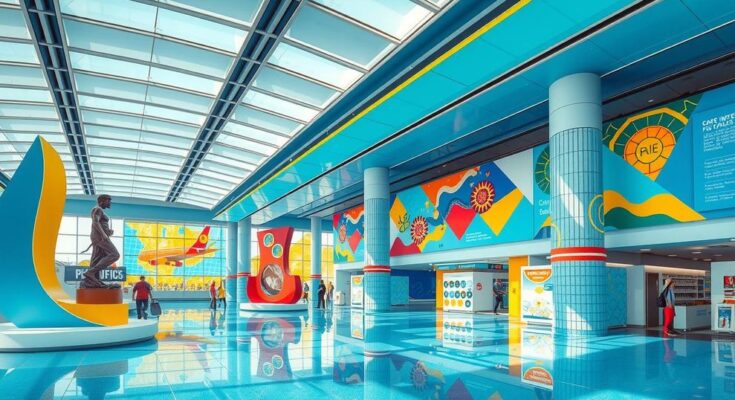In northwest China’s Shaanxi Province, the Xi’an Xianyang International Airport is breaking the mould of traditional transport hubs. By introducing the world’s first in-terminal museum filled with archaeological treasures, this airport is transforming from a simple transit point to a cultural landmark. This innovative project not only showcases the rich heritage of the region, exemplified by exhibits like the Qin Duke Bo, but also enhances cultural visibility and engagement for both tourists and locals alike.
Under a new visa-free transit policy that allows eligible foreign travelers to stay up to 240 hours, the airport experienced a 140% increase in foreign visitor numbers, surpassing 126,000 in 2024. This influx fosters a vibrant cultural exchange, permitting visitors to explore the essence of Chinese history through the museum while waiting for their flights. Thus, the museum serves as a final farewell for departing tourists, imbuing their journey home with cherished memories.
This museum, spanning 6,400 square meters, houses artefacts discovered during the airport’s construction, blending modern architecture with traditional Chinese aesthetics. Such a concept challenges preconceived notions of museum spaces, as museums evolve from static urban establishments to dynamic cultural institutions that meet audiences where they are. The museum at the airport is a testament to this evolution, emphasising accessibility and engagement.
With museums now reaching into public spaces—schools, parks, and other communal areas—cultural artefacts are becoming accessible to broader audiences. The Xi’an museum takes this philosophy to the airport, a bustling hub full of international travellers, creating an opportunity for cultural enrichment during their downtime. Engaging visitors where they are is the future of cultural institutions.
This shift in perception underscores a greater vision for cultural integration, suggesting that museums could thrive in airports, shopping malls, and train stations. Such spaces can create seamless cultural experiences, allowing history and art to entwine with daily life. This new model addresses modern challenges of accessibility and audience engagement, enhancing public interaction with heritage.
Historically, airports were merely functional transit points; however, as urban ecosystems evolve, they are increasingly embodying commerce, entertainment, and now culture. This “functional fusion” allows a myriad of cultural expressions, widening the role of transportation hubs beyond mere travel. Art installations, like a spectacular copper screen at Wenzhou North Railway Station designed by master sculptor Zhu Bingren, illustrate how art can warm the mechanical landscape of modernity. “The construction of the high-speed rail needs culture and art to bring warmth to the iron giant,” Zhu remarked.
The idea of a ‘museum without walls’ may not be new, but placing a museum in an airport—a symbol of global interconnectedness—is indeed groundbreaking. This unique approach invites travellers to experience culture in their everyday journeys, enriching their understanding of a world woven together through history and artistry.
The Xi’an Xianyang International Airport has introduced a pioneering in-terminal museum that showcases local archaeological artefacts, enhancing cultural engagement for tourists. This initiative facilitates broader access to Chinese heritage, especially notable with the airport’s increased foreign visitor numbers due to a new visa policy. By integrating cultural spaces in modern transportation hubs, the museum embodies a shift towards accessible and dynamic engagement with history.
The Xi’an Xianyang International Airport sets a transformative precedent for the role of transportation spaces in cultural engagement. By embedding a museum within its terminal, it not only offers tourists a glimpse into Chinese history and artistry but also redefines how museums interact with the public. This innovative approach represents the future of cultural institutions, advocating for integration within daily life to democratise access to heritage and enrich traveller experiences.
Original Source: www.globaltimes.cn



